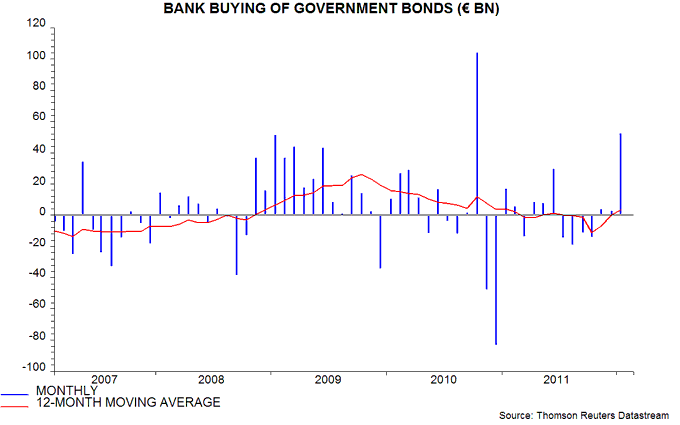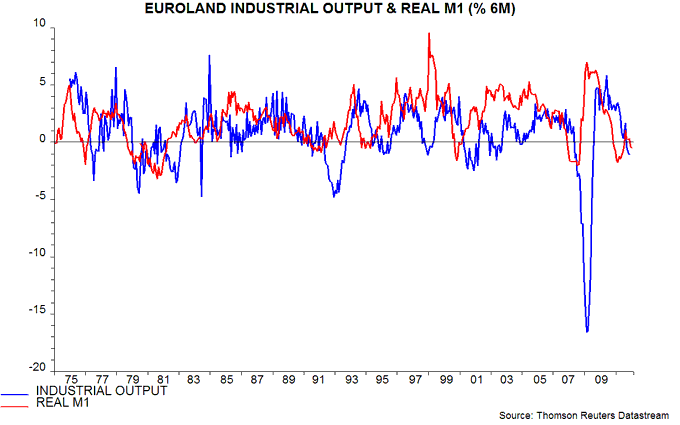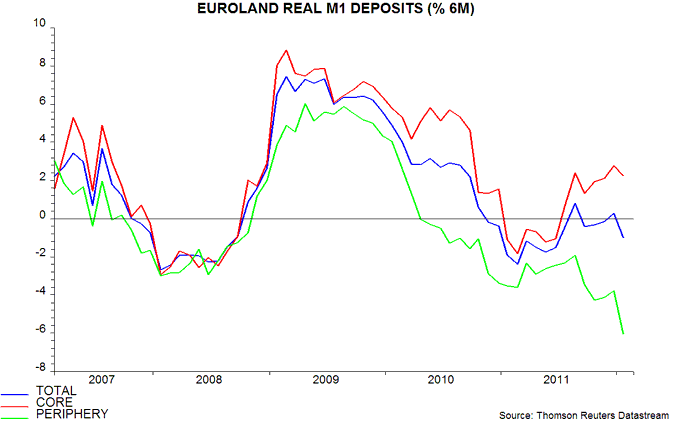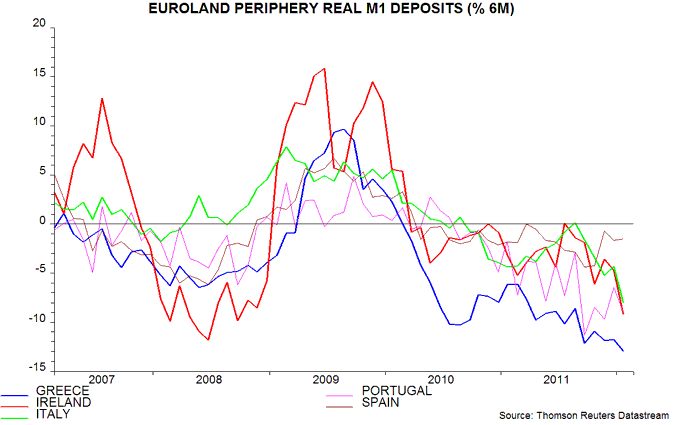Eurozone money numbers: peripheral M1 contraction accelerates
A provisional verdict based on today’s money supply numbers for January is that the Draghi bazooka has succeeded in stabilising bank balance sheets but has yet to lay the monetary foundation for an economic recovery. Peripheral monetary indicators, indeed, have deteriorated further, suggesting a faster contraction of economic activity.
The stabilising effect of the bazooka is evidenced by a €68 billion, or 0.7%, rise in broad money M3 in January, reversing falls in November and December. This reflected the sovereign carry trade: banks bought €52.3 billion of Eurozone government bonds, the most since October 2010 and up from €2.7 billion and €3.7 billion respectively in December and November – see first chart. (These numbers exclude the ECB’s purchases under the securities markets programme and are not seasonally adjusted.) As expected, the biggest buyers were Italian and Spanish banks, whose holdings rose by €28.4 billion and €24.4 billion respectively, presumably reflecting purchases of local debt.
The M3 rebound, however, was not mirrored by narrow money M1, which rose by only 0.1% last month following a 0.2% December decline. M1 is a better economic leading indicator than M3, probably because consumers and firms shift money into more liquid forms before increasing spending. The six-month rate of change of real M1 slipped further to -0.5% (not annualised) in January from -0.3% in December – second chart. This measure had turned positive between August and November last year, signalling less negative economic news in early 2012, allowing for the usual six-month lag; the recent decline implies deteriorating prospects for mid 2012.
M1 comprises currency in circulation and overnight deposits. The ECB publishes a country breakdown of deposits but not currency. A 1.0% (not annualised) fall in Eurozone real M1 deposits in the six months to January conceals a solid 2.2% rise in “core” economies (defined here as Austria, Belgium, France, Germany, Luxembourg and the Netherlands) offset by a 6.1% plunge in the “periphery” (i.e. Greece, Ireland, Italy, Portugal and Spain) – third chart. The latter represents a new low, suggesting that the rate of peripheral GDP contraction will accelerate in mid 2012.
The peripheral country decomposition, as expected, shows the largest decline in Greece (-12.9%, not annualised) but Ireland is now as weak as Portugal (-9.2% versus -9.0%), with Italy not far behind (-8.0%); Spain’s contraction, oddly, is milder (-1.5%) – fourth chart. In the former cases, these are depression-scale declines, although normal monetary relationships may be breaking down in the context of rising EMU dissolution risk.





Reader Comments (2)
Simon.....interesting article...I have to wonder whether the divergent trends are more about people in the periphery trying (1) to switch money out of their respective banking systems into more credit-worthy systems or (2) into other legal jurisdictions; a lot of Greek money has moved into the UK for example. If I take my own example, I have bank deposits in multiple currencies and, although I reside in Singapore, my spending pattern is based on my total bank deposits and not on my SGD-denominated deposits with a Singapore bank. How does the country-by-country split handle, say, an Italian national taking his money out of a local banks and putting it in, say, a EUR-denominated deposit in Germany or in Switzerland? Would such a switch impact the monetary transmission mechanism between his quantity of banks deposits and his future speding patterns on goods, services and financial/non-financial assets? Thanks
Excellent points, Troy. I did enter the caveat that normal monetary relationships could be breaking down. A EUR-denominated deposit in Germany held by an Italian would be included in the German aggregate, while a deposit moved to Switzerland would fall out of the Eurozone data. Some of the peripheral weakness is no doubt explained by capital flight but this still has negative economic implications - it signals extreme risk aversion that may carry over to economic behaviour while cash transferred abroad is less likely to be spent on domestic goods and services.